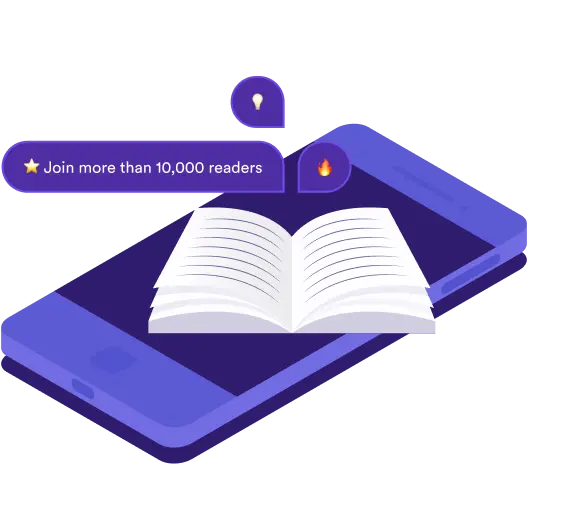Interested in SnackzLAB or SnackzAGENT? 👉🏼 This way!

Enjoying Snackz.ai?
Sign up!
or
I agree to the Privacy Policy and the Terms of Service.
Already have an account?
📩 Check your inbox!
A link to reset your password has been sent to your email address.
Reset Password
No worries! Just enter your email below, and we'll help you reset that password:
Enjoying Snackz.ai?
Sign up!
or
I agree to the Privacy Policy and the Terms of Service.
Already have an account?
📩 Check your inbox!
A link to reset your password has been sent to your email address.
Reset Password
No worries! Just enter your email below, and we'll help you reset that password:
Dava Sobel
Where would you like to order?
Please select your country to proceed with the checkout.
⚡ Free 3min Summary
The Glass Universe - Summary
In 'The Glass Universe,' Dava Sobel reveals the remarkable contributions of women at the Harvard College Observatory during the mid-nineteenth century. Initially hired as 'human computers,' these women, including relatives of male astronomers and college graduates, analyzed glass photographic plates of stars. Their meticulous work led to groundbreaking discoveries in star classification and stellar distance measurement. The book, enriched with personal letters and diaries, showcases their perseverance and intellectual achievements that significantly advanced astronomical understanding.
Key Ideas
Empowerment of Women in Science
The book highlights the significant yet often overlooked contributions of women in the scientific community. These women broke barriers and defied societal norms, proving that gender should not limit one's potential in any field, especially in science.
Advancements in Astronomical Techniques
The book explores the evolution of astronomical techniques, particularly the transition from manual calculations to photographic plates, revolutionizing star study and laying groundwork for future technological advancement in astronomy.
Collaboration and Perseverance
The achievements of the women at the Harvard Observatory demonstrate the power of collaborative efforts and relentless perseverance, overcoming gender discrimination and limited resources through teamwork and determination.
FAQ's
The book primarily highlights the contributions of women who worked as 'human computers' at the Harvard College Observatory. These women, initially relatives of male astronomers, later included graduates from prestigious women's colleges. Their work in analyzing glass photographic plates led to significant astronomical discoveries.
The women at the Harvard College Observatory made several groundbreaking discoveries, including the classification of stars and the measurement of stellar distances. Their meticulous analysis of glass photographic plates was crucial in advancing our understanding of the universe.
Dava Sobel enriches the narrative with personal letters and diaries, making the historical account both engaging and inspiring. This approach provides a more intimate look at the lives and contributions of the women, adding depth and personal context to their scientific achievements.
💡 Full 15min Summary
This key idea explores the role of women in advancing the field of astronomy. The author highlights the significant contributions made by women who worked as "human computers" at the Harvard Observatory in the late 19th and early 20th centuries. These women were hired to analyze astronomical data, a job that was considered menial and tedious at the time. However, they proved to be incredibly skilled and dedicated, and their work was crucial to the development of astronomy.
The author notes that women were attracted to astronomy because it was considered a "suitable" profession for women at the time. However, many of these women were highly educated and talented individuals who could have pursued other careers if they had been given the opportunity. Despite facing discrimination and being paid less than their male colleagues, these women persevered and made lasting contributions to the field of astronomy.
One of the most notable women mentioned in this key idea is Williamina Fleming. She was a Scottish immigrant who was hired by the Harvard Observatory in the 1880s to classify stars. She discovered the existence of white dwarf stars, which were previously unknown to astronomers. Her discovery paved the way for future research on these types of stars.
Another important woman in astronomy mentioned in this key idea is Henrietta Swan Leavitt. She discovered the period-luminosity relationship, which is a fundamental concept in modern astronomy. This relationship is used to measure the distance between galaxies and has helped astronomers map the universe.
Annie Jump Cannon is also highlighted in this key idea for her work in developing the stellar classification system. This system is still used today and has helped astronomers better understand the properties of stars.
Cecilia Payne-Gaposchkin's discovery of the composition of stars is also mentioned in this key idea. She was the first person to suggest that stars were composed mostly of hydrogen and helium, which was a radical idea at the time.
Enjoyed the sneak peak? Get the full summary!
Let's find the best book for you!
AdvertisementSection.TitleNew
AdvertisementSection.SubTitleNew

Get the books directly into your inbox!
✅ New Release
✅ Book Recommendation
✅ Book Summaries
Copyright 2023-2025. All rights reserved.